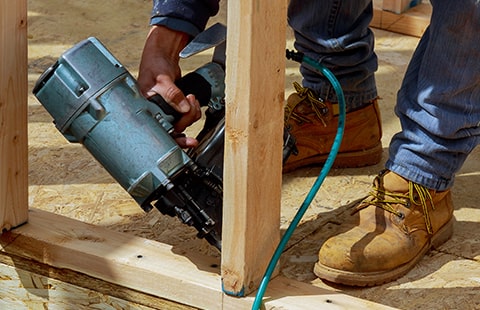Get unique, complex parts easily. No matter your requirements, Chaoyi Spring creates hard-to-produce coil springs and wire forms.
Let us help you create the custom wire form you need, from S-hooks and J-hooks to utility hooks and more.
We work closely with customers across a wide range of industries, helping them design and manufacture made-to-order parts.
Why choose Chaoyi Spring? We prioritize customer-focused collaboration, modern equipment and the latest technology to make your parts per print.
Find the information and guidance you need, from measuring a spring to learning about materials, placing an order and much more.
Compression springs are ubiquitous in our world, silently working behind the scenes in countless applications. From the humble ballpoint pen to the intricate mechanisms of industrial machinery, compression springs provide


Compression springs are ubiquitous in our world, silently working behind the scenes in countless applications. From the humble ballpoint pen to the intricate mechanisms of industrial machinery, compression springs provide the force and resilience that keep things functioning smoothly. In this article, we'll delve into the fundamentals of compression springs, exploring their construction, properties, and common applications. By understanding the basics of compression springs, we can better appreciate their role in our daily lives and the important work they do.

A compression spring is a helical spring designed to resist compression forces. Imagine a coiled wire, like a slinky, that pushes back when you try to compress it. That's essentially what a compression spring does. It's made of a resilient material, typically spring steel, that can withstand repeated compressions and returns to its original shape. Think of it as a tiny, coiled-up energy reservoir, ready to release its stored energy when needed.
The beauty of a compression spring lies in its simplicity. When you apply a force to compress the spring, it stores that energy within its coils. This stored energy manifests as potential energy. The spring will then try to return to its original length, exerting a force in the opposite direction of the compression force. This force is what makes compression springs so useful in a variety of applications. The force exerted by a compression spring is directly proportional to its compression, meaning that the more you compress the spring, the stronger the force it exerts. This relationship is described by Hooke's Law, a fundamental principle in physics that explains the behavior of elastic materials.
Compression springs are available in various forms to suit different needs. Some of the common types include:
Several factors influence a compression spring's performance, including:
Compression springs are ubiquitous in our daily lives, making their way into a wide range of applications. Here are just a few examples:
Selecting the right compression spring for a specific application requires careful consideration. You must consider the following factors:
The world of compression springs is vast and fascinating. There are many more intricacies to explore, such as different spring designs, stress calculations, and advanced applications. However, by understanding the fundamental concepts outlined in this article, you can gain a solid foundation for appreciating the role these humble but essential components play in our world. From keeping our cars running smoothly to ensuring the proper operation of our favorite appliances, compression springs are everywhere, quietly working to make our lives easier and more efficient.
In conclusion, compression springs are essential components that provide force, resilience, and energy storage in a wide range of applications. Their simple yet effective design allows them to perform reliably and efficiently in countless situations. Understanding the basic principles of compression springs, including their construction, properties, and applications, can help you appreciate their vital role in our daily lives. So next time you see a coiled wire, remember that it might just be a compression spring, silently working to make things around you function smoothly and effectively.
Browse some of the custom wire forms and springs that we manufacture. Don’t see what you need? We specialize in made-to-order products that meet your application requirements.
Visit Our GalleryNeed a custom wire form or coil spring? We make it work. Fill out the contact form and a representative will respond within 1 business day. If you have a PDF or CAD file, you can submit to request a quote.